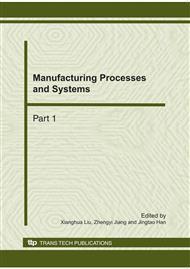p.181
p.186
p.191
p.195
p.200
p.204
p.210
p.215
p.219
Pb Finite Element Analysis for Profile Wear of Rolling Radial Tire with Camber Angle
Abstract:
A three-dimensiona1 nonlinear finite element analysis(FEA) mode1 of radial tire,which includes the materia1 nonlinearity and the geometric nonlinearity of the 1arge deformation, is established to analyze the effective factors on the wear resistance of 195/60R14 tire.It shows that the distribution of the friction force in the ground-contact area gradually changs from greater inside and smaller outside to greater outside and smaller inside with the increase of the 1oad of tire. It also shows that the maximum friction force, which decreases at first and increases later as the angle of belt cord increases, occurs in the shoulder area. The static friction force in ground-contact area is symmetrically distributed. On the one hand, the over inflation pressure leads to the increase of the maximum friction force resulting in the premature wear in the middle of crown under the same load. On the other hand, the under inflation pressure leads to the phenomena of bridge effect, which is resulted in the uneven wear in the tread.
Info:
Periodical:
Pages:
200-203
Citation:
Online since:
October 2010
Authors:
Keywords:
Price:
Сopyright:
© 2011 Trans Tech Publications Ltd. All Rights Reserved
Share:
Citation:


